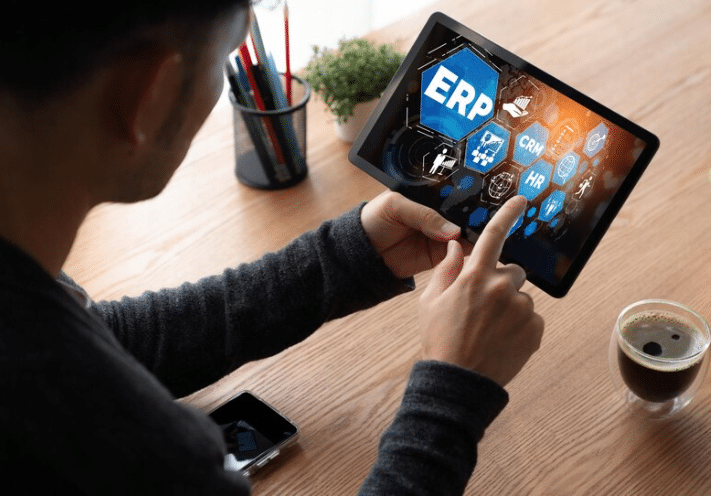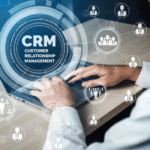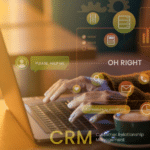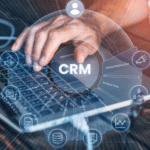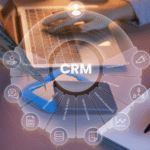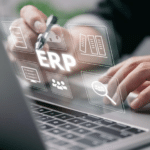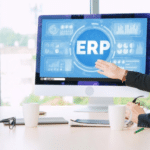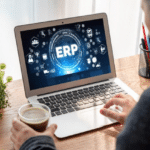Introduction
In today’s competitive business environment, maximizing Return on Investment (ROI) is crucial for sustaining growth and profitability. Enterprise Resource Planning (ERP) systems are pivotal in achieving this goal by streamlining operations, enhancing productivity, and providing valuable insights. As we look to 2024, businesses must leverage the full potential of ERP systems to ensure they receive the highest possible ROI. This article explores strategies and best practices for maximizing ROI with ERP systems in 2024.
1. Comprehensive Needs Assessment
- Understanding Business Requirements
Before implementing an ERP system, it is essential to conduct a comprehensive needs assessment. Understanding your business requirements, pain points, and goals will help you select the right ERP solution. Identify the specific processes that need improvement and the functionalities that are crucial for your operations. - Stakeholder Involvement
Involve key stakeholders from different departments to gather insights and ensure that the ERP system meets the needs of all users. This collaborative approach will help in identifying the most critical requirements and setting clear objectives for the ERP implementation.
2. Selecting the Right ERP System
- Tailored Solutions
Choose an ERP system that is tailored to your industry and business size. Industry-specific solutions often come with pre-configured modules and features that address common challenges and streamline implementation. - Scalability and Flexibility
Ensure that the ERP system is scalable and flexible to accommodate future growth and changes in your business. A scalable ERP system can easily adapt to increased data volume, additional users, and new business processes.
3. Effective Implementation Strategy
- Phased Implementation
A phased implementation approach can help manage the complexity and reduce the risks associated with deploying a new ERP system. Start with the most critical modules and gradually roll out additional functionalities. This approach allows for better management of resources and minimizes disruptions to business operations. - Change Management
Implementing an ERP system involves significant changes to existing processes and workflows. A robust change management strategy is essential to ensure a smooth transition. Provide adequate training to employees, communicate the benefits of the new system, and address any concerns to gain their buy-in.
4. Leveraging Advanced Technologies
- Artificial Intelligence and Machine Learning
Integrate AI and ML capabilities into your ERP system to automate routine tasks, analyze data, and provide actionable insights. AI-powered analytics can identify trends, predict future outcomes, and optimize decision-making processes. - Internet of Things (IoT)
Incorporate IoT devices to enhance connectivity and data collection across your operations. IoT-enabled ERP systems can monitor equipment performance, track inventory levels, and improve asset management, leading to increased efficiency and reduced costs.
5. Optimizing Business Processes
- Process Reengineering
Review and reengineer your business processes to align with the capabilities of the ERP system. Standardize and streamline workflows to eliminate inefficiencies and ensure that the ERP system delivers maximum value. - Continuous Improvement
Adopt a culture of continuous improvement by regularly evaluating and optimizing your business processes. Use the data and insights provided by the ERP system to identify areas for improvement and implement changes that enhance productivity and profitability.
6. Enhancing Data Quality and Accuracy
- Data Cleansing
Ensure that the data migrated to the new ERP system is accurate, complete, and consistent. Perform data cleansing to eliminate duplicates, correct errors, and standardize data formats. High-quality data is crucial for generating reliable reports and insights. - Data Governance
Implement data governance policies to maintain data quality and accuracy over time. Establish roles and responsibilities for data management, define data standards, and implement processes for data validation and verification.
7. Measuring and Monitoring Performance
- Key Performance Indicators (KPIs)
Define KPIs to measure the performance and impact of the ERP system on your business operations. Track metrics such as operational efficiency, cost savings, and employee productivity to assess the system’s effectiveness. - Regular Reviews
Conduct regular reviews to evaluate the performance of the ERP system and identify areas for improvement. Use these reviews to ensure that the system continues to meet your business needs and delivers the expected ROI.
8. Ensuring User Adoption
- Comprehensive Training
Provide comprehensive training to ensure that employees are proficient in using the ERP system. Offer hands-on training sessions, user manuals, and ongoing support to help users become comfortable with the new system. - User Feedback
Encourage users to provide feedback on their experiences with the ERP system. Use this feedback to make necessary adjustments and improvements, ensuring that the system remains user-friendly and effective.
9. Utilizing Advanced Reporting and Analytics
- Real-Time Reporting
Leverage the advanced reporting capabilities of the ERP system to access real-time data and insights. Real-time reporting allows for timely decision-making and quick responses to changing business conditions. - Predictive Analytics
Utilize predictive analytics to forecast future trends and make data-driven decisions. Predictive analytics can help in optimizing inventory levels, planning production schedules, and identifying potential risks.
10. Partnering with a Reliable Vendor
- Vendor Support
Choose an ERP vendor that offers reliable support and services. A strong partnership with your vendor can ensure successful implementation, provide ongoing maintenance, and help you leverage new features and updates. - Regular Updates and Upgrades
Stay current with the latest updates and upgrades offered by your ERP vendor. Regular updates ensure that your system remains secure, efficient, and capable of meeting evolving business needs.
Conclusion
Maximizing ROI with ERP systems in 2024 requires a strategic approach, from selecting the right system and effective implementation to leveraging advanced technologies and ensuring continuous improvement. By following these best practices, businesses can enhance operational efficiency, drive growth, and achieve sustainable success with their ERP investments.
